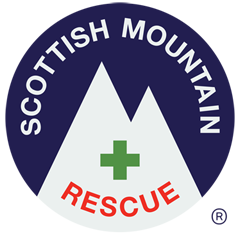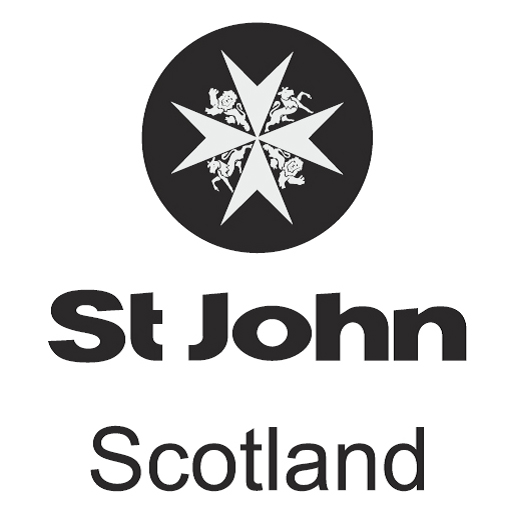The phone went at 12.50, “a man had fallen on Liathach”. The alarm was raised by his companion who had raced down from 3,000 feet, getting to the Hostel at 12.30 (good going since his friend had fallen at about 11.15).
They had climbed Mullach an Rathain in moderate conditions with a dusting of snow high up. His companion was keen to tackle the Northern Pinnacles but they hadn’t gone far before turning back. The casualty then slipped and fell “about 60 feet” down a gully. He had a bleeding head injury. It wasn’t clear whether he was conscious. His friend wisely decided not to attempt to down climb the steep gully.
The Navy ‘copter lifted 5 Team at 2.30 and 6 more, including me, at 3.00. We were dropped at about 750m on the west ridge of Mullach. Climbing down the gully from above posed a high risk of knocking rock down on to the casualty. We descended steep ground just west of the summit and then contoured to our right. Chris MacKenzie heard answering shouts from the casualty which helped him to locate the correct gully. He was very glad that Terry Doe was nearby to lead the formidable climb up the gully. Terry rated it E1 4C. He was belayed by Chris using a 20m “confidence rope”. Andrew followed using the fixed rope left by Terry and Chris. The casualty’s position was given as 910m, NG 91211 57812.
Arjan was at the foot of the fixed rope. He was concerned by the loose rock, “It’s a death trap”.
Chris was on the radio to team MO, Alan Munro, looking for medical advice. I asked if they would like me to come up.
“Yes, and bring more Oxygen”.
As I was getting ready a sizeable boulder crashed down the gully.
“Is it safe to ascend?”
“Yes, Terry’s finished getting his rucksack”.
I was low on energy having carried a 50m rope and a 500 foot rope to the summit. I struggled to make the climb of about 120 feet even with the fixed rope. Andrew, on the radio, asked me hurry. Arriving at the casualty it was around 5.45. There was little light. He was laying feet down in a narrow gully full of very loose stones and rocks. There was a rock the size of a small suitcase close to his head. I was constantly afraid of dislodging this or other rocks. It felt necessary to move with great care at all times for one’s own safety.
It had stopped raining and the gully gave some shelter from the considerable wind, probably about 25 mph on the top. Nevertheless it was cold enough for Arjan to have been glad of my spare Dachstein mittens. The casualty was wearing woollen mittens and balaclava provided by Chris. He had a black Paclite GTX jacket over a thin fleece and vest. His clothing was wet and he must have have been hypothermic after laying there for over 6 hours. He was on a wet and uneven surface. It seemed unlikely he had moved since his fall.
Chris had established that the casualty had pain in his left thigh, left chest and right wrist. He had deployed a Bothy Bag but the wind and the casualty’s movements limited its effectiveness as a shelter. Chris had also put on a cervical collar and started Oxygen treatment. We discussed analgesia and trying to get him to take a hot drink but decided both were contraindicated by his low and deteriorating conscious level.
Assessment was difficult. There was a 3 inch vertical frontal laceration near the midline. His respiratory rate was much increased at about 35 but his pulse was 70 – 80. It was hard to assess his ribs because he was now barely conscious. Chris thought some were broken. There was no obvious fracture in his thigh (Chris had cut through his trousers) or his right wrist, although it was swollen.
How to get him out? The RAF helicopter had replaced the Navy one but the conditions made helicopter extrication impossible. We were in radio communication with Team Leader, Neil Hinchliff, in our base via a relay on the west ridge. Neil was in no doubt that lowering was the best option. I was concerned about the safety of the gully descent. From talking to the casualty’s companion, I knew that he was only about 60 feet down the gully. I raised with Andrew and Terry the option of hauling him up. This was put to Neil but he mentioned the increasing wind up top and a lower was the chosen option.
Lowers on steep ground are normally done using 2 ropes, each secured by 3 anchors. We had one rope and suitable belay points were almost impossible to find. Andrew and Terry finally set one up nearly 20m lateral to the casualty. Meanwhile Chris Wilson was somehow bringing up the stretcher, safeguarding himself on the fixed rope whilst manoeuvring the stretcher which Terry and Andrew were working hard to pull up on the 500 foot rope.
Around 7.15 the casualty became restless, pulled off his mask and rolled on to his left side, sliding about 2 feet down the hill in the process. We lark-footed a sling around his right thigh that I then held to try and avoid further movement. Shortly after this his condition deteriorated markedly. His pupils were dilated and fixed, I couldn’t feel his femoral pulse but thought there was perhaps a faint, very slow, carotid pulse. His breathing had slowed and was so shallow as to be barely apparent.
I could see no hope now of a successful outcome. I thought the emphasis should shift to personal safety, voicing my opinion that “heroic efforts” now seemed inappropriate. Nobody seemed to share this view and Neil, having heard of the casualty’s deterioration, was urging all speed to get him to the waiting ‘copter.
Who should accompany the stretcher? It was likely to be a long, difficult and dangerous lower, over unknown terrain. Chris MacKenzie thought that muscle power would be crucial and that 2 barrow boys would be needed. Terry and Andrew were busy with the belay. The 2 Chris’s were both unhesitating in volunteering. I didn’t argue since I knew they were a lot younger, stronger and more skilful than I. Chris had sacrificed his own pack to bring up the medical grab bag. I gave him my spare head torch and a little food.
The risks were enormous: 1 rope and 1 belay loaded with 3 men and a stretcher (about 40 stone), and the likelihood of 500 foot of rope dislodging rocks which could bounce on a taught rope and damage it, or hit one of the stretcher trio. Possibly the biggest risk arose from the position of the belay, far lateral to the line of the lower. The long rope would not help initially, so, a 20m rope was attached with Terry back roping it from a standing belay and me in front of him griping the rope with both hands. We knew that, if the full weight came on to our rope, we would be forced to release it. Soon the 20m rope was at its full extent. Chris W somehow managed to detach it and put in another 20m rope connected by a Fisherman’s knot.
We continued until it seemed the long rope was taking the strain. The 2 x 20m ropes were detached and we pulled them up. The stretcher party now had a disaster that was predictable given the offset position of the belay. The long rope which must have been dog-legged around some rocks, suddenly straightened and the stretcher went in to free fall on a near vertical section. Chris MacKenzie estimated that it fell about 30 feet. They finished in chaos on top of each other but without catastrophic injury although Chris did hurt his back and this incident may have contributed to his back problem that, 9 year later, would require surgery.
At the belay the back-up Prussik had locked and been driven in to the ground. My Petzl knife had a rare outing to cut it free leaving Andrew without a Prussik. I’d left mine attached to the safety rope in the gully but, fortunately, I’d brought a long Prussik from our store which we now divided, giving us one each.
I set off down the long abseil, following Terry, and leaving Andrew to descend last. Immediately it was evident there was too much friction in my system. I managed to get back up to the belay and changed to a larger, pear shaped, karabiner. I still had to work hard all the way down to keep moving and the following day noticed that both my karabiner and braking device had been grooved by the 500 feet of gritty rope.
In the dark I had difficulty knowing what line to take. The gully was to my left but, for some reason, the rope below lay to my right. Since Terry had radioed that he’d spent time getting the best line for the rope, I thought I’d better keep right. After about 30m this resulted in a considerable pendulum left and I crashed in to an extremely narrow and steep section of the gully. I was wedged in the apex, facing outwards, and had difficulty turning. Apparently the Chris’s had huge problems controlling the stretcher here.
The angle eased in the lower 1/3 of the descent but I had a new and puzzling problem. The rope, instead of laying below me, was in an “S” shape with a substantial length above me. I kept having to stop, free the rope and throw it down below me, concerned all the time that it could jam or dislodge a loose rock. Reaching the end of the rope, I was in large bouldery scree, on an angle of about 20 degrees. I moved slowly down to where Terry and Alan were waiting. Duncan, Jim and the others had carried the stretcher over this difficult ground to the waiting RAF ‘copter. Alan had examined the casualty but found no sign of life. Nevertheless he was taken to Raigmore and slowly rewarmed but to no avail. His temperature had been 26 degrees on arrival. He had overwhelming chest injuries, particularly on the left side.
We continued out to Coire Mhic Nobhuill, meeting the RAF MRT guys on the way. It was 2 am when we got back to the Hostel.
Gerry McPartlin

